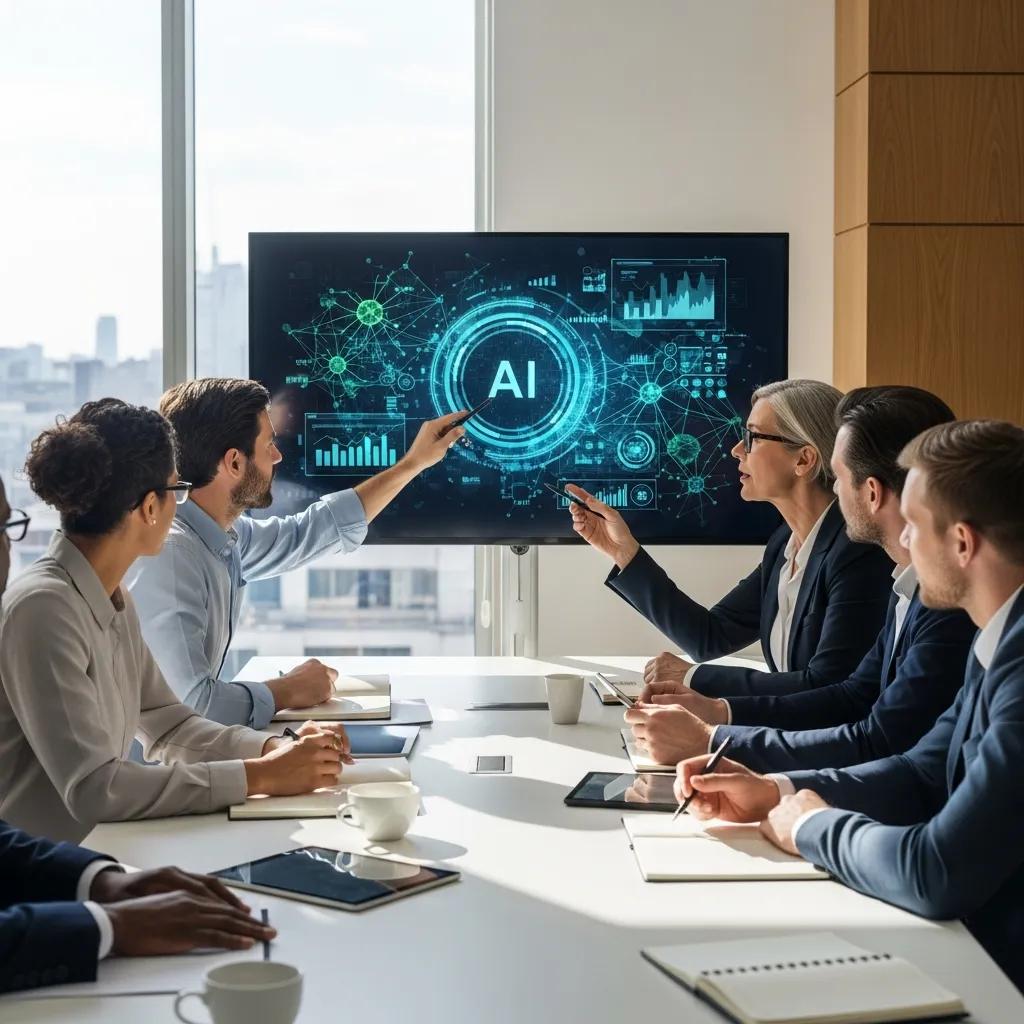Are you curious about the salaries of certified chief AI officers? The rise of artificial intelligence has created many new specialized roles. The Chief AI Officer (CAIO) plays a crucial role in shaping how organizations adopt and use AI. This post explores CAIO compensation, factors that influence their salaries, and offers career insights into this emerging field.
Salaries of Certified Chief AI Officers: A Deep Dive
The Chief AI Officer is a relatively new role. CAIOs lead an organization’s AI strategy, overseeing AI initiatives, and ensuring ethical and effective AI usage. This role often involves working with large datasets and complex algorithms, requiring specialized skills and extensive experience.
Factors Influencing CAIO Salaries
Several factors, like experience, education, industry, company size, and location, influence a Chief AI Officer’s salary. Extensive experience (often 10-15 years) in AI and machine learning with a proven track record is highly valued.
Education is key, with advanced degrees often leading to higher salaries. Industry also matters, with finance and healthcare often offering more competitive compensation packages.
The organization’s size and location also significantly impact compensation. Candidates with a strong educational background combined with regulatory compliance knowledge have an advantage in salary negotiations.
Educational Background and Experience
Most CAIO positions require at least a master’s degree in a related field, such as computer science or artificial intelligence. A Ph.D. can significantly increase your chances, particularly in research-focused organizations. Data analysis and machine learning knowledge are also essential components of a strong educational background.
Business management skills are beneficial due to the role’s leadership aspects. Organizations seek professionals with proven experience overseeing AI strategy in leadership positions. This experience provides valuable insights into AI technologies and their impact on modern markets. Key responsibilities include managing AI projects and navigating the complexities of data analytics and ai technologies. Their bachelor’s degree paired with data science knowledge helps organizations increase salary through the innovative use of AI tools for generative AI and machine learning.
Industry and Company Size
AI is expanding across various sectors. Industries like finance and healthcare often offer higher salaries due to their profitability and extensive use of AI. This management position plays a critical role as companies grow and encounter new challenges.
Larger organizations in profitable sectors typically offer CAIOs better compensation than smaller companies. Their role involves project management of strategic ai initiatives using various AI tools to support business strategy.
Location and its Impact
Location significantly impacts compensation due to varying living costs and market conditions. Tech hubs like Silicon Valley often offer higher base salaries and additional perks like stock options.
Stock options can vary greatly depending on the company, industry, location, and size. Geographic location influences stock options as the strategic leadership of AI officers impacts long-term organizational value in their respective ai industry.
FAQs about Salaries of Certified Chief AI Officers
How much do chief AI officers make?
CAIO salaries vary depending on several factors. These include experience, location, company size, and industry. They typically earn between $200,000 and $500,000 annually, with some exceeding $1 million.
What is the salary of Chief AI?
Pinpointing a precise average salary for a Chief AI officer is challenging. This is due to the role’s relative newness and the rapidly evolving job market. As mentioned, typical annual salaries range from $200,000 to $500,000 based on several factors. Appointing these individuals to leadership positions signifies a focus on implementing successful AI systems, while mitigating potential risks. This position offers career insights for those seeking a crucial role within this rapidly expanding field.
What is the highest salary for an intelligence officer?
This question typically refers to government intelligence officers. This is a different field than corporate CAIOs. Corporate chief AI officers at large, publicly traded companies (especially in high-growth sectors) often earn over $1 million. This is primarily due to higher equity in their total compensation package.
The highest compensation varies widely. Corporate vs. government roles differ significantly, with corporate roles at larger, public, or pre-IPO companies often offering better compensation. This is because of potentially larger equity packages. These may become very valuable after a public listing or acquisition.
Government intelligence officers’ careers usually stay within their agency. Many CAIOs aim to lead successful projects and potentially transition to roles like Chief Executive Officer for increased financial and career advancement. They often collaborate with technology officers, offering leadership advisory and contributing their expertise to successful ai.
What is the highest salary in AI?
The answer varies across AI roles. AI engineers with four years of experience can earn around $200,000-$225,000 annually plus $25,000 or more in stock at Silicon Valley firms. Machine learning and infrastructure leads usually earn 15% or more above that. This can increase up to an additional 10% over 15-25 years, considering future growth potential.
Computer vision specialists are in high demand at companies like Google and Tesla. These positions can offer compensation around $550,000 per year plus $75,000-$125,000 in equity. A product manager in the field with understanding ai, especially with machine learning and strategic leadership abilities can find numerous openings with top industry leaders like Google as more firms integrate ai into their business models to address the regulatory requirements of emerging ai technologies.
Concluding Insights on Chief AI Officer Salaries
Salaries of certified chief AI officers demonstrate the increasing importance of AI across various sectors. As AI continues to transform industries, individuals with the right skills, experience, and education are well-positioned to earn high salaries in this growing field. CAIO salaries reflect this value, especially given their significant impact on business strategy.
Companies appointing chief AI officers are investing in AI leadership and future solutions. Their compensation often increases with successful project management and leadership in key initiatives. This career path can lead to positions like Chief Technology Officer, signifying the role chief AI officers play in advancing an organization’s technological capabilities. CAIOs often oversee all AI implementation, handling all AI-related issues. The Chief Technology Officer role underscores their crucial role within organizations. This role demands educational background in artificial intelligence and strong business acumen as individuals need strategic decision-making capabilities to succeed.






